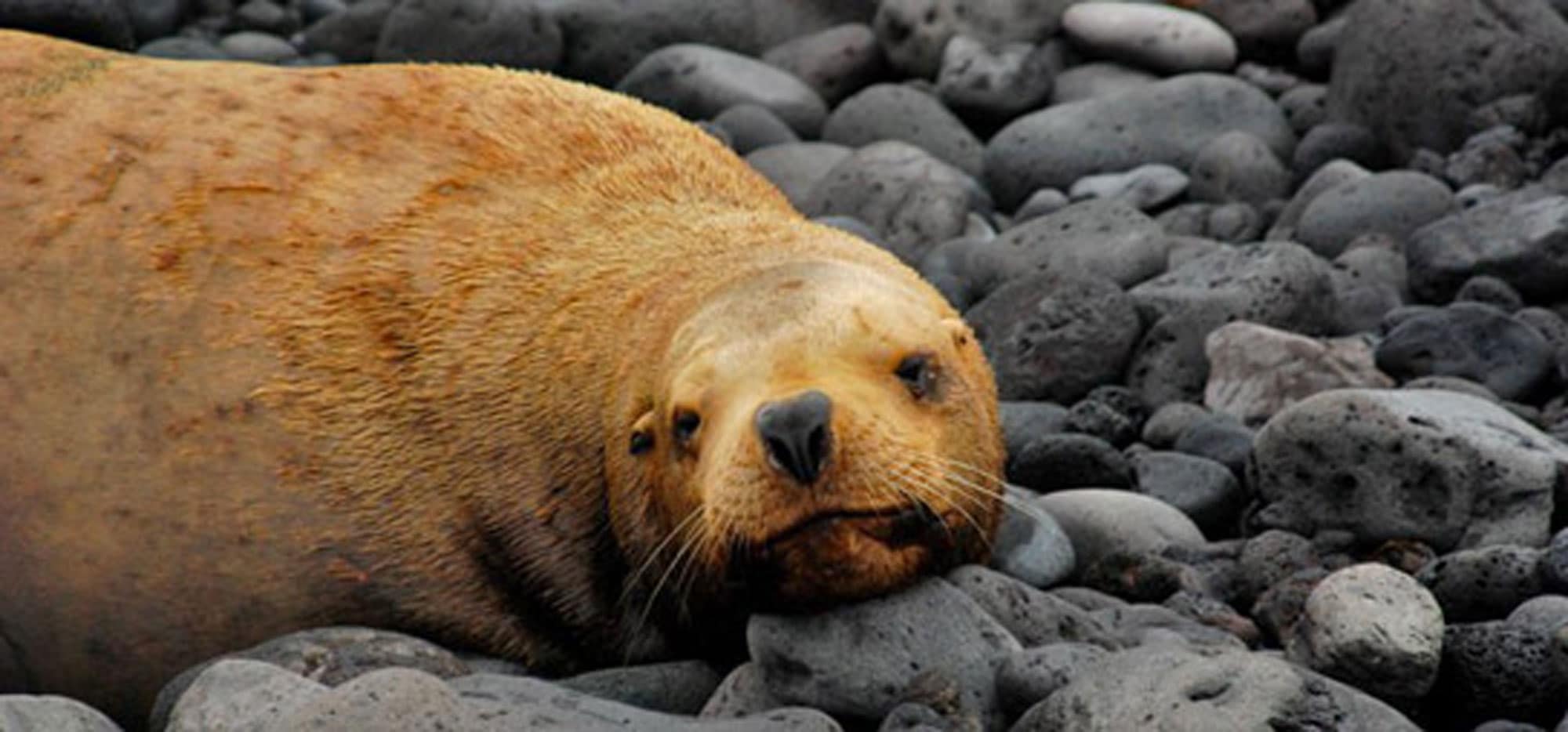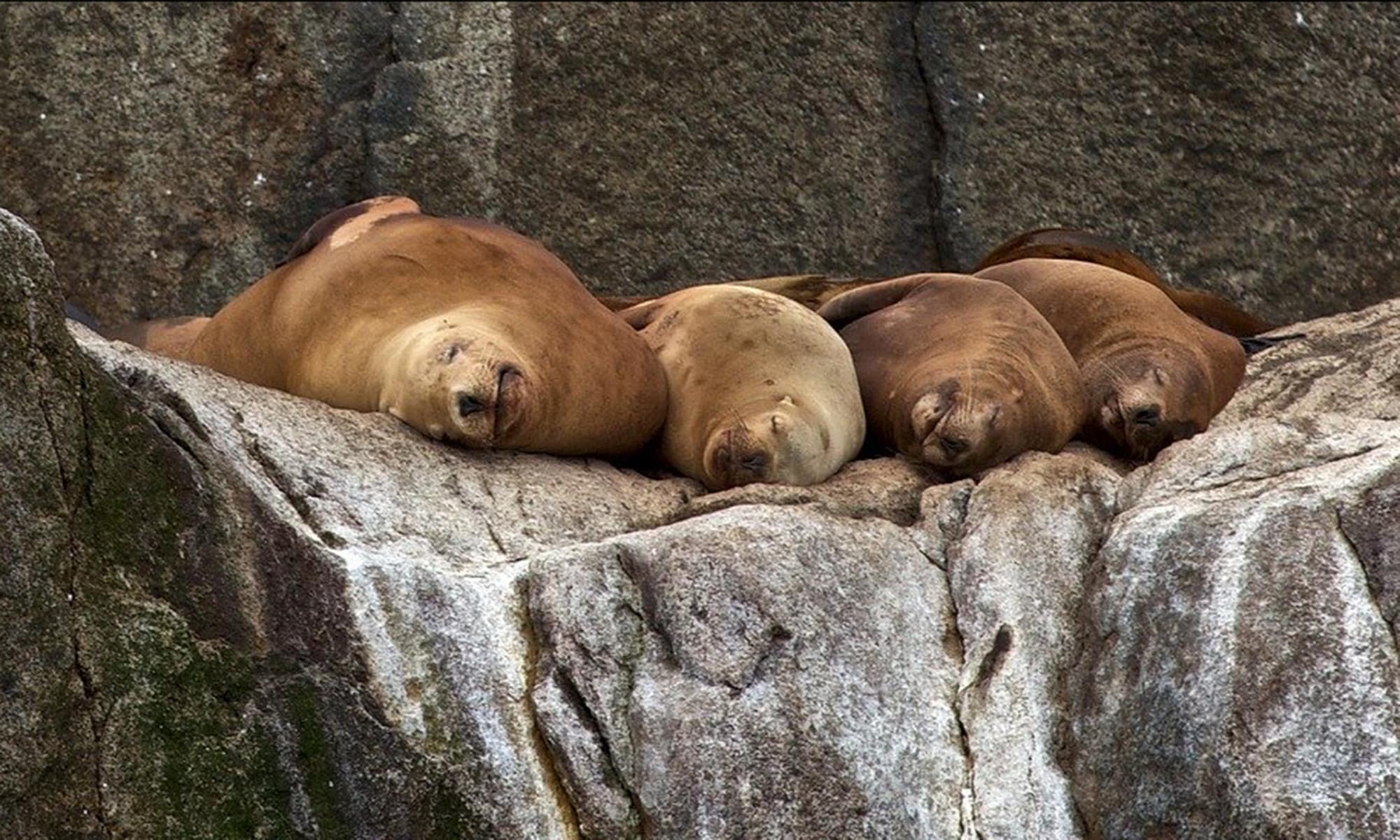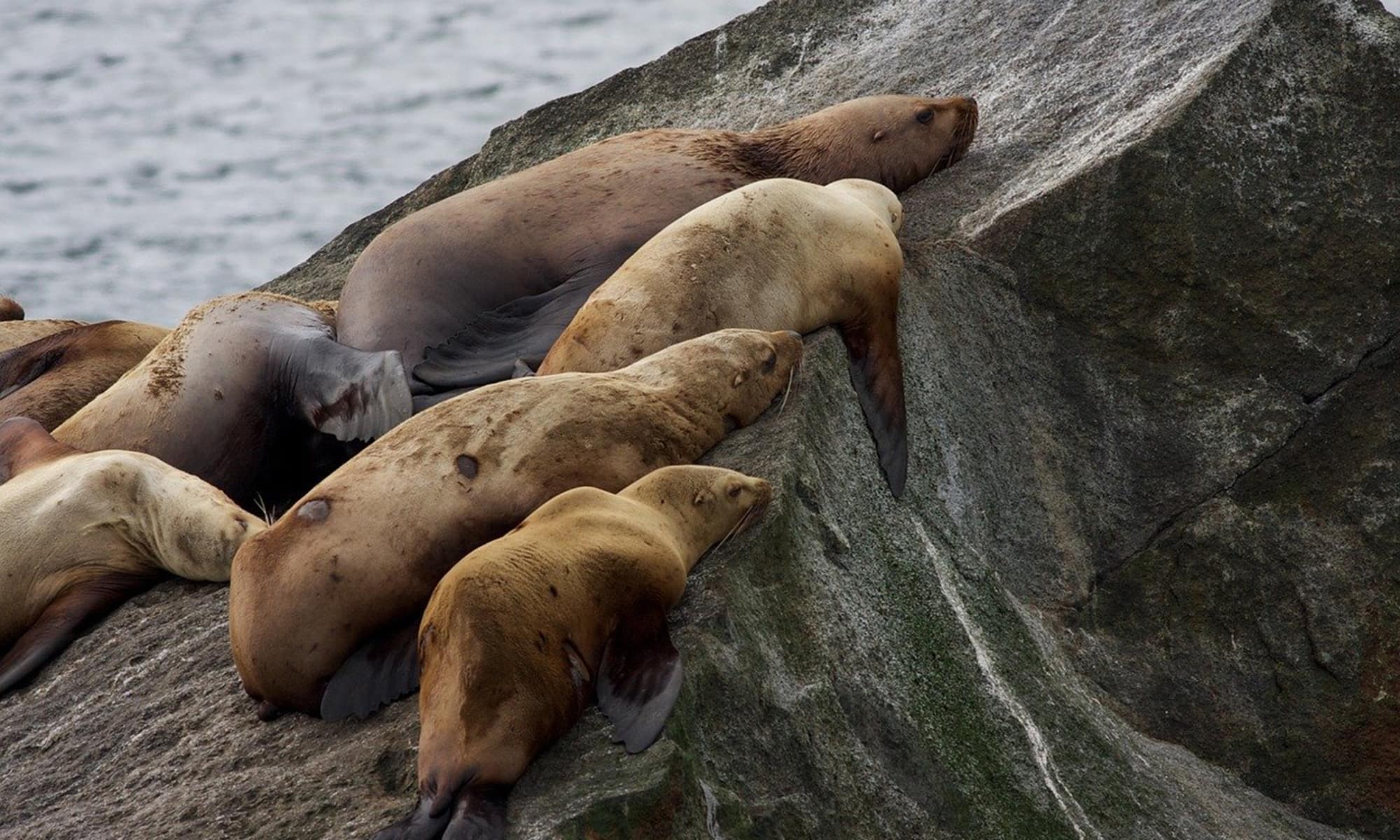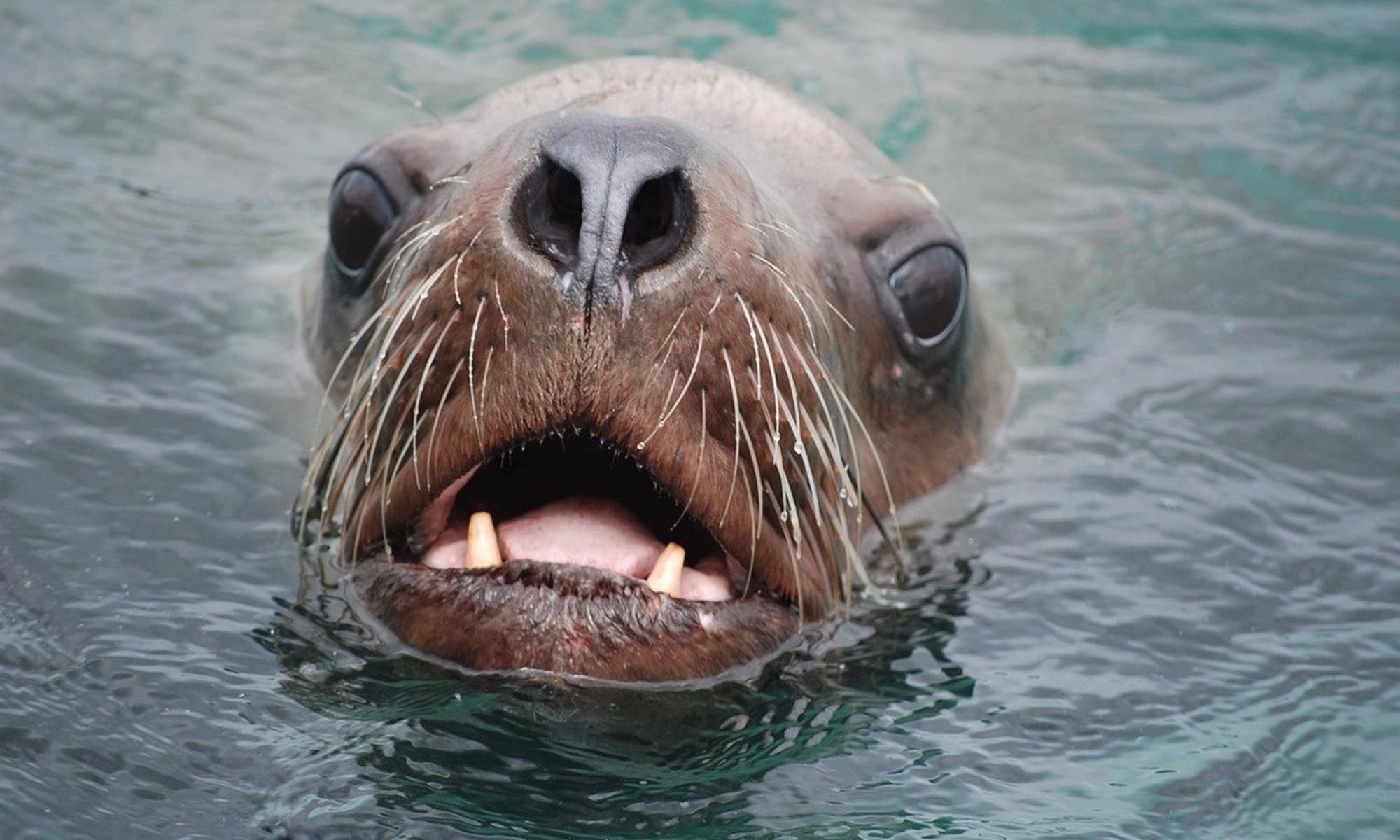Adopting a Cat
Please enjoy this video from Jackson Galaxy, a well-known cat behaviorist and host of...
Read moreSteller Sea Lions (Eumetopias jubatus) can be found along the coast and outer continental shelf along the North Pacific Rim from California to Japan. The population is divided into two distinct segments, the Eastern (East of Cape Suckling, AK) and the Western (West of Cape Suckling, AK) populations.
There has been a rapid decline in the Steller Sea Lion population throughout its historic range. The western population declined 75% between 1976 and 1990 and then another 40% between 1991 and 2000.
In 1990, Steller Sea Lions were listed as threatened throughout their entire range. In 2013, the eastern population segment of Steller Sea Lions was federally delisted but the western population is still federally listed as endangered.
Historically Steller Sea Lion populations were threatened by hunting for their meat, fur, and oil. They were killed by bounty hunters for eating fish and were killed to limit their predation on fish in aquaculture facilities.
However, Steller Sea Lions—just like all marine mammals in the United States—are now protected by the Marine Mammal Protection Act (MMPA) which was passed in 1972. The MMPA prohibits, with certain exceptions, the take of marine mammals in U.S. waters and by U.S. citizens on the high seas, and the importation of marine mammal and marine mammal products into the U.S.
Today they are threatened by boat strikes, pollutants, illegal hunting, offshore oil exploration, entanglements, habitat degradation and competition with fisheries for food resources.
Did you know? Steller sea lions were named after Georg Steller, the German naturalist who first described them in the 1740’s.

Steller Sea Lions are light blonde to reddish brown in color with a slightly darker chest and abdomen. Females can grow to be 9 feet long and weigh up to 770 lbs. Males, on the other hand, can grow to be 11 feet long and weigh up to 2,500 lbs.
Steller sea lions are Otariid seals or “eared seals” meaning they have small visible ear flaps and they can turn their hind limbs forward and use their large fore flippers to walk on all fours, making them very maneuverable on land.
Did you know? Sea lions get their name from the long fur on their neck that resembles a lion’s mane.

Habitat:
Steller Sea Lions prefer the colder sub-arctic waters of the North Pacific. Critical habitat for them is considered a 20 nautical mile buffer around all major haul-outs and rookeries as well as associated terrestrial, air and aquatic zones, and three large offshore foraging areas.
Haul Outs:
They use haul outs to rest, for molting, and as rookeries for mating and pupping. They usually consist of beaches, ledges, or rocky reefs.
Steller Sea Lions are colonial breeders. The males or bulls establish and defend territories on rookeries to mate with females, during which time they do not feed.
Females or cows give birth to a 30 to 50 lb. pup between mid-May and mid-July. Pups are born with a thick dark brown lanugo which they will molt at four to six months old.
Nine days after giving birth the female will leave her pup to go forage at sea. She will spend between one and three days at sea then return to feed her pup for one to two days, then back to sea to feed again. This cycle continues until the pup is old enough to forage with mom.
Most pups nurse for at least one year but in some cases they can stay with their mothers for up to three years.

Steller Sea Lions are opportunistic foragers feeding primarily at night. They feed on a wide variety of fish, bivalves, cephalopods and gastropods. Their diet varies with the seasons and availability of prey.
Did you know? Steller Sea Lions can dive up to 1,300 feet!
Steller Sea Lions are either solitary or in small groups when they are at sea. However, near rookeries and haul outs they gather in large “rafts” at the surface. They are known to haul out with other Otariid species such as Northern Fur Seals (pictured above) and California Sea Lions.
Did you know? Males are capable of powerful vocalizations that are accompanied by a vertical head bobbing motion.

There are no Steller Sea Lion breeding rookeries found in Washington and they are typically here during the fall and winter. If you happen to see Steller Sea Lions, do not touch.
It is illegal to touch any marine mammal as they are protected by the Marine Mammal Protection Act. However, you may observe sea lions from more than 100 yards away with binoculars.
Injured/orphaned sea lion pups:
Although Steller Sea Lions do not breed in Washington, sometimes females and pups can be seen hauled out in the area.
If you believe you have found an injured adult, or a pup that has been unattended by its mother for more than a few days, contact Sno-King Marine Mammal Response at 206.695.2277 or the National Oceanic and Atmospheric Administration (NOAA) Seal Hotline at 1.866.767.6114.
Harassment:
If you witness anyone harassing a sea lion or other marine mammal, or allowing their pets to do so, call the NOAA Fisheries Enforcement Hotline at 1.800.853.1964.
Watch footage above of PAWS’ first-ever Steller Sea Lion patient, feeding in his enclosure during rehabilitation. Can’t see the video? Watch it on our Vimeo channel instead.
Images & video: Copyright PAWS 2015
Please enjoy this video from Jackson Galaxy, a well-known cat behaviorist and host of...
Read moreHow much will it cost to care for a new animal companion? It’s important to...
Read morePlease enjoy this blog post from Victoria Stilwell’s positively.com website....
Read more